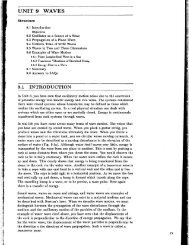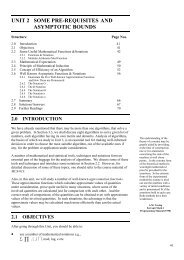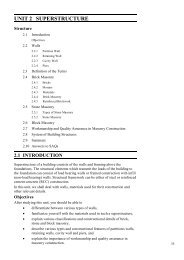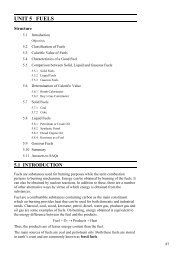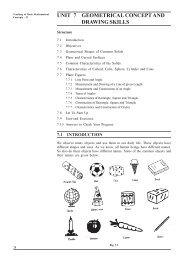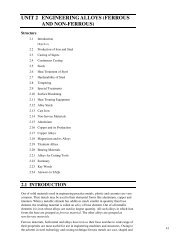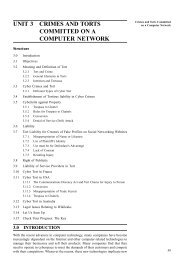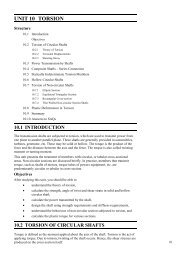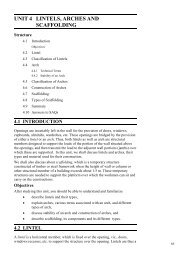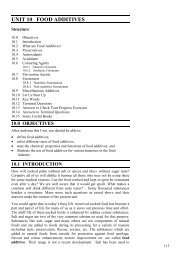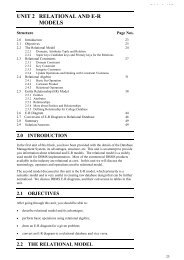unit 1 differential calculus - IGNOU
unit 1 differential calculus - IGNOU
unit 1 differential calculus - IGNOU
You also want an ePaper? Increase the reach of your titles
YUMPU automatically turns print PDFs into web optimized ePapers that Google loves.
1.6.1 Derivative of a Function<br />
We now define the derivative of a given function by using the notion of limit.<br />
Definition 10<br />
The function y = f (x) is said to have a derivative (or be differentiable) at a<br />
point x if, and only if, the limit<br />
lim<br />
h →0<br />
f ( x + h)<br />
− f ( x)<br />
h<br />
dy<br />
exists and is finite. This limit, written as or f ′ (x), is called the<br />
dx<br />
derivative of f (x) with respect to x.<br />
If the derivative of a function exists at every point of an interval, then we say that<br />
the function is differentiable in that interval. However, while considering the<br />
derivatives at the end points of an interval, we evaluate suitable one-sided<br />
derivatives. For example, if the interval is [a, b], then the derivative at x = a is<br />
calculated as<br />
lim<br />
+<br />
h →0<br />
f ( a + h)<br />
− f ( a)<br />
and at b as<br />
h<br />
lim<br />
−<br />
h →0<br />
f ( b + h)<br />
− f ( b)<br />
h<br />
If f ′ (x) is continuous at a point, then we say that f (x) is continuously<br />
differentiable at that point.<br />
Example 1.21<br />
Solution<br />
Let y = x n (n is a positive integer). Prove that .<br />
1 − dy n<br />
= nx<br />
dx<br />
Then<br />
y = f ( x)<br />
=<br />
n<br />
x<br />
n<br />
f ( x + h)<br />
− f ( x)<br />
( x + h)<br />
− x<br />
=<br />
h<br />
h<br />
( x + h − x)<br />
−1<br />
n −<br />
=<br />
[ ( x + h)<br />
+ ( x + h)<br />
h<br />
n 2<br />
The above step is derived by using the result<br />
We now have<br />
f<br />
a<br />
n<br />
− b<br />
n<br />
= ( a − b)<br />
[ a<br />
x<br />
n<br />
+<br />
. . .<br />
+ ( x + h)<br />
x<br />
b + . . . + ab<br />
n − 2 n −1<br />
+ x<br />
n −1<br />
n − 2<br />
n − 2 n −1<br />
+ a<br />
+ b<br />
+ −<br />
n<br />
= ( x + h)<br />
+ ( x + h)<br />
x + . . . + ( x + h)<br />
x + x<br />
h<br />
( x h)<br />
f ( x)<br />
n −1<br />
n − 2<br />
n − 2 −1<br />
Taking the limit h → 0, we get<br />
dy<br />
dx<br />
=<br />
lim<br />
h→<br />
0<br />
f ( x + h)<br />
− f ( x)<br />
= x<br />
h<br />
Therefore, .<br />
1 − dy n<br />
= nx<br />
dx<br />
n −1<br />
+ x<br />
n − 2<br />
x +<br />
. . .<br />
+ x<br />
n −1<br />
(n number of terms)<br />
]<br />
]<br />
Differential Calculus<br />
37




